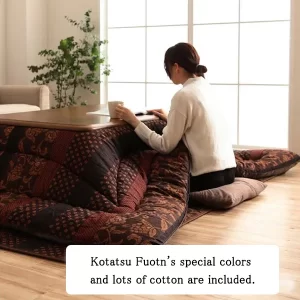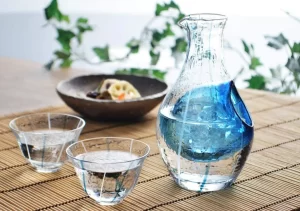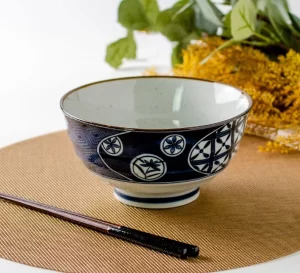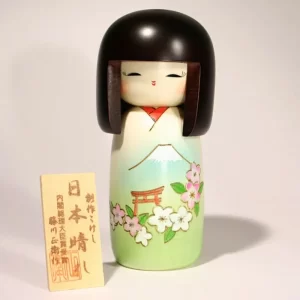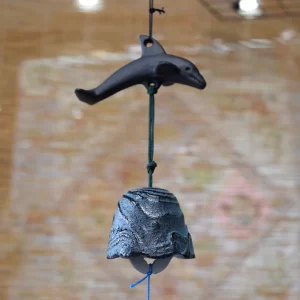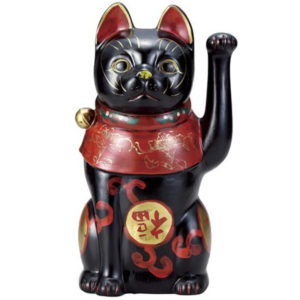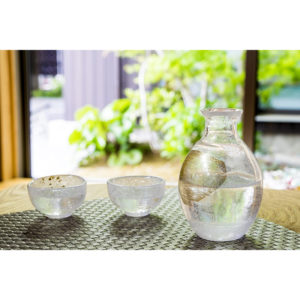NEWS
Japanese traditional candle history
Candles have been used since the days of sun worship. It is known that it existed in Europe and China around the 3rd century BC. The Greeks also used bundles of papyrus grass or reed leaves and candles coated with beeswax or animal fat. It is a little different from the candles used today, but unlike today, in a time when there was no electricity, candles were used mainly for religious ceremonies in palaces and temples as a valuable tool to illuminate dark places. was used. Candles were thought to have purifying powers It is believed that the light of candles wards off evil spirits, wards off evil, purifies the […]
Kotatsu Futon Blanket, a tradition of winter in Japan
In Japan, the Kotatsu Futon Blanket is something that people miss when the cold weather sets in. Kotatsu Futon Blanket mandarin oranges are said to be a winter tradition in Japan. The origin of Kotatsu Futon Blanket goes back to the Muromachi period and is said to have a long history of 500 years. Kotatsu Futon Blanket is a heating appliance suitable for Japanese life Why was Kotatsu Futon Blanket born in Japan in the first place? It was deeply related to the living environment in Japan. Japanese houses were designed to be airy. This is considered to be one of the countermeasures against summer heat, and in "Tsurezuregusa" written […]
About the history of traditional Japanese sake bottles and sake cups
The origin of sake dates back to the Nara period in Japan, when sake brewing using rice and koji was established. They used the harvested rice to make sake, offered it to the gods, and prayed for a good harvest and good health. Until around the Heian period, it was used at festivals, and it was a special drink for privileged people to drink at New Year's and other celebrations. I started drinking alcohol. Accordingly, "SAKE bottle, SAKE cup" developed Tokkuri (SAKE bottle), Ochoko (SAKE cup), Sakazuki (SAKE cup) are familiar to us. Some are hardly used nowadays. There are various materials such as lacquerware, porcelain, pottery, and metalware. In […]
Why we recommend Tatami Rush nap mattress
Tatami Rush nap mattress is a nap mattress made of Tatami material with a simple lattice pattern using the natural material Rush. Comfortable Tatami Rush nap mattress Tatami Rush is: This mattress uses Tatami Rush material from Japan Each Rush is thick and has a thick skin and fine fibers. The inner material is made of 40mm hard cotton with a focus on cushioning properties, so it has just the right amount of elasticity and can be used comfortably even on flooring. Aomori Hiba processing is applied to the surface of Tatami Rush. Features of Tatami Rush Product size (approximately) 90 x 200 cm material Lining: Japanese Rush Middle material: […]
What is Mino ware? Mino ware evolving with features and types
Mino ware is used in many of the tableware in Japan. Mino ware is a traditional Japanese craft and the standard tableware of Japan. It is said to have originated from Sueki in the Nara period, and reached its peak in the Azuchi-Momoyama period. From the Nara period to the present day, the technique has continued to evolve, and today it has become an indispensable part of the Japanese dining table. The characteristics of Mino ware have been handed down unchanged even today, when it has come to be casually used in the daily life of Japanese people. The flow of using glaze and the enjoyment of distorted shapes are […]
What is the history and characteristics of Shigaraki ware?
Shigaraki ware is a pottery produced mainly in Shigaraki-cho, Koka City, Shiga Prefecture. It is one of the six ancient kilns of Japan. It is characterized by being made of high-quality sticky soil, and has been made in a wide range of sizes, from small to huge. The raccoon dog of Shigaraki ware is famous, but in the past, it has developed as a vessel and tool that supports people's lives according to the times, such as jars, jars, mortars, braziers, umbrella stands, bathtubs and tiles. Yakishime pottery takes advantage of the texture of the clay and is fired without the use of glaze, resulting in a faintly reddish “hiiro” […]
Features of Usaburo Kokeshi Japanese doll
The characteristics of Usaburo's kokeshi doll making are that the body is devised (plump roundness), and the design expresses a three-dimensional effect by combining brush painting, sculpture and pottery. Usaburo Kokeshi is also working on innovations in production techniques such as potter's wheel technology and special machine techniques. Usaburo Kokeshi's materials are unique in that they use the beauty of the natural wood grain, such as zelkova, dogwood, and chestnut, as well as the parts that are used according to the individuality of the wood. What is Usaburo Kokeshi's appeal? Of course, Usaburo Kokeshi's own cuteness and solid technical and design skills. Usaburo Kokeshi Japanese Doll The materials used for […]
Characteristics and History of Southern Furin wind chimes
The biggest feature of Southern Furin wind chimes is "sound". Long, clear sound that cannot be produced by other Furin wind chimes. The secret to the sound of Nanbu Furin wind chimes is that they are made from high-density castings and Nanbu ironware, using high-quality iron sand and rock iron (iron ore) as raw materials. History and background of Nanbu Tekki (Furin wind chimes) What is the history behind the creation of Southern Furin wind chimes with a high healing effect? It started when casting craftsmen were invited from Omi at the end of the Heian period. In Iwate Prefecture, Mizusawa in Oshu City and Morioka City are famous for […]
Origin and history of Manekineko lucky beckoning cat
Manekineko lucky beckoning cat is a lucky charm spread all over Japan from Edo (Tokyo).Manekineko lucky beckoning cat is a lucky charm unique to Japan that invites good fortune with its adorable pose. It is said to have originated from the townspeople culture of Edo (Tokyo) during the Edo period, and its popularity spread throughout the country. Not only do the blessings differ depending on the left and right of the raised hand, but the production area, material, and expression of the cat also differ. Even today, Manekineko lucky beckoning cats can be seen at the eaves of Japanese shops. Manekineko lucky beckoning cat is a lucky charm that is […]
About the charm, techniques and history of Edo glass
What is Edo Glass? Edo glass has cool shapes and designs. The rustic flavor of Edo glass comes from the fact that every step of the process is done by the hands of skilled craftsmen. And what is the appeal of Edo glass? "Edo glass" refers to glass products that are handcrafted in parts of Tokyo and Chiba, inheriting traditional techniques from the Edo period. All processes are handcrafted by craftsmen, and no two products are the same. They come in a variety of colors and designs, and are crafted with sophisticated techniques that make them feel and feel comfortable when you look at them. In 2014, it was designated […]


